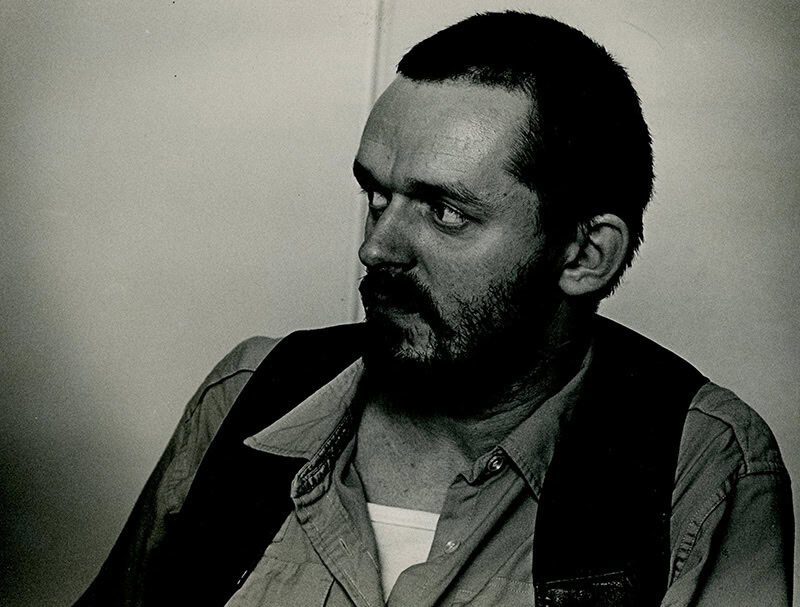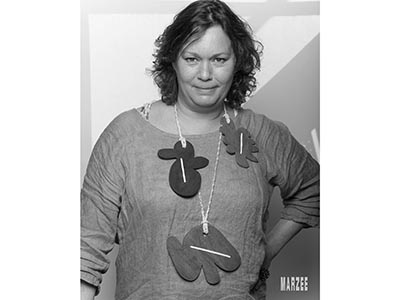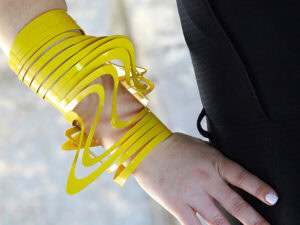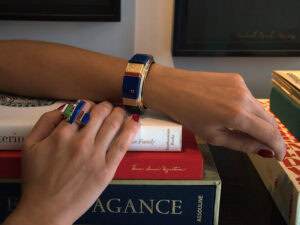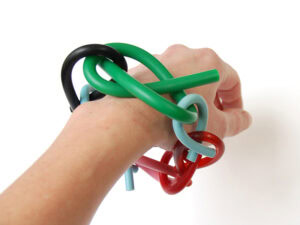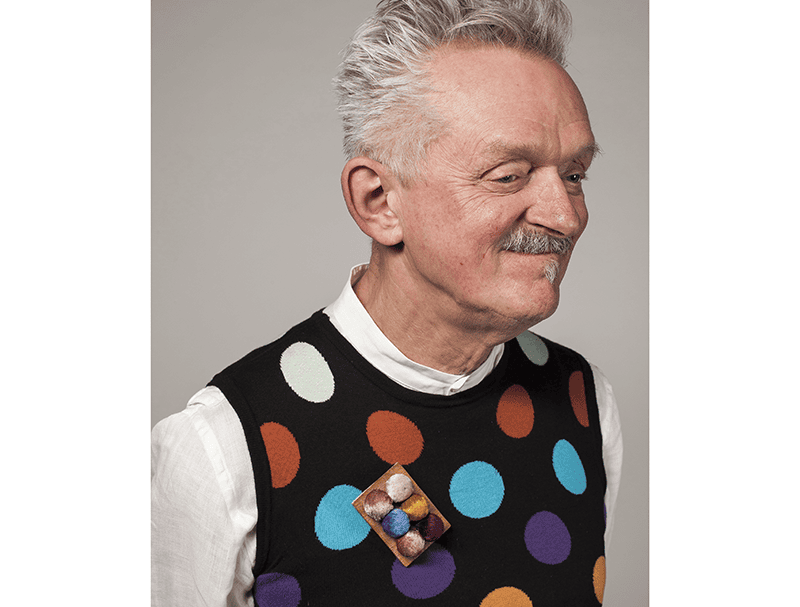
Nobody ever thought it would be possible for Willem Hoogstede to not be with us any longer. He was always there, in the jewelryverse, like a steady beacon. Not only will his humor and his characteristic voice be missed by many, but his keen eye as well. But his warm attention will be missed most of all. Willem noticed everyone and gave people the space they needed. Especially those who don’t take the stage themselves. Willem had the unique gift to make people feel comfortable and let them bloom.
On May 4, 2024, on his way by bicycle to the Dutch annual memorial of the LGBTQIA+ victims of World War II at the Amsterdam Homomonument, near the Anne Frank House and the Westerkerk, Willem Hoogstede passed away.
In a few words, I want to summarize Willem’s life and talk about his activities and his significance to the people around him in his teaching career as well as in the jewelry scene. Willem was modest, but far from invisible. He was a huge fan of fashion, jewelry, art, and clothing.
W.F.M. (Willem) Hoogstede was born December 2, 1947, in Wageningen, the Netherlands. He worked for four decades as a school teacher at primary schools in Amsterdam. The last 18 years of his career, he worked on Nellestein, in the Bijlmer area, not only as a teacher but also as a coach of teachers starting their careers. He was well loved by his pupils and mentees.
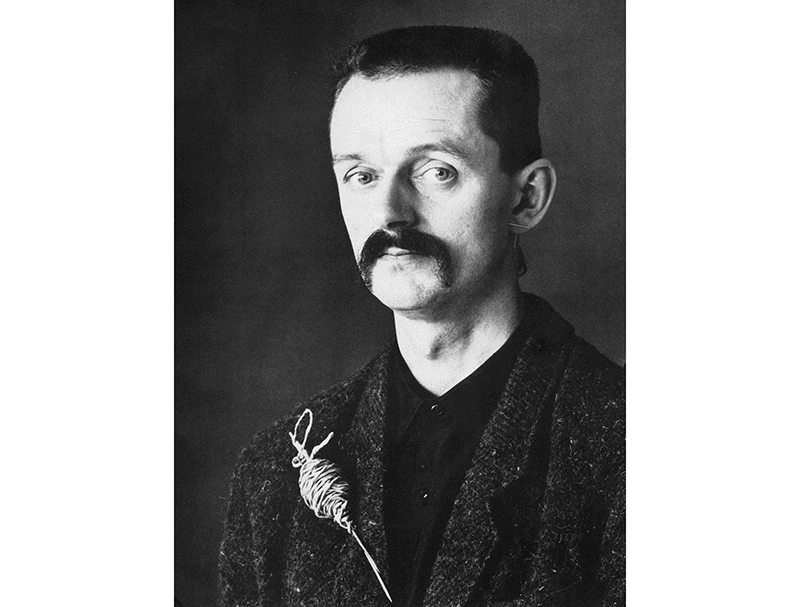
Together with his partner (and, later, husband), the jewelry designer and gallerist Paul Derrez, Willem was an avid contemporary jewelry collector from almost the very first hour. He regularly worked at Galerie Ra, Paul’s gallery, and for example staffed booths at international fairs. He was active as a (guest) curator, too.

Willem spent his youth in Wageningen, where his parents had a laundry. Willem—like Paul—came out of the closet in 1969: in love he preferred men. Willem and Paul first met a few years later, in 1973, at De Schakel, a nightclub run by the COC, a Dutch organization that stands up for emancipation, acceptance, and equal rights for the LGBTQIA+ community. Willem asked Paul to dance to Marvin Gaye’s 1968 song “I Heard It through the Grapevine.” Their relationship started soon afterward. They started living together in Amsterdam in 1974. Two years later, in 1976, Paul opened his legendary Galerie Ra.

Willem and Paul started their jewelry collection with jewelry from Galerie Sieraad, where Paul did an internship. Later on, jewelry by artists who exhibited at Galerie Ra was added. In 1986, the exhibition Sieraden 1966–1986, Collectie Paul Derrez en Willem Hoogstede, from the couple’s jewelry collection, went on display in Museum Het Kruithuis in Den Bosch and in the Gemeentemuseum Arnhem, both in the Netherlands.
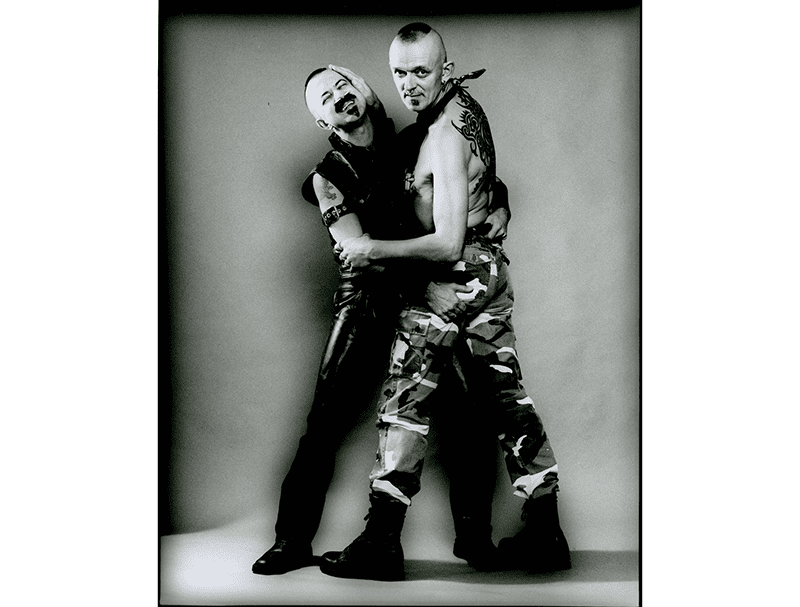
A large part of their collection was on display in an exhibition called Dare to Wear, at CODA in 2013. It was presented in groupings centered around the places where jewelry is worn on the body or on clothing: the chest (lapel), hand, arm, finger, shoulder, or neck.
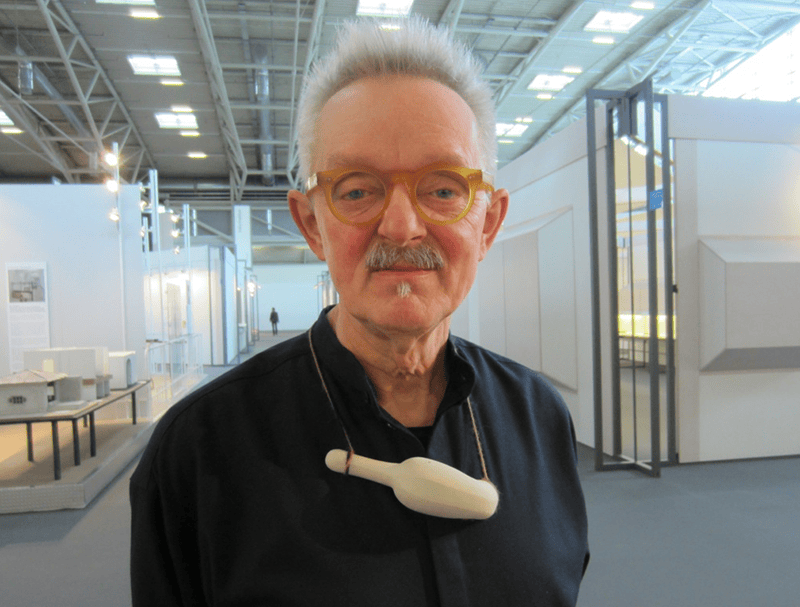
Not only did they collect jewelry, but wore most pieces frequently, too. Both Willem and Paul thus represent the essence of jewelry. Only worn jewelry shows its essence. Wearing jewelry is way better than placing it in a display case, on a wall, or, even worse, locked away in drawers or in a safe. Jewelry should be worn, shown, and celebrated!

The Hoogstede and Derrez collection consists mainly of abstract, conceptually designed jewelry made from materials other than the usual intrinsically valuable materials such as silver and gold. Willem was never seen without jewelry. Neither is Paul, by the way.
Dutch artist Karin Daan (b. 1944) designed Amsterdam’s Homomonument. It memorializes the suffering of the gay community during World War II. The monument, close to the Anne Frank House, was unveiled on the Westermarkt on September 5, 1987. From its inception onward, Willem and Paul were there every year on May 4, together with a crowd, to officially commemorate war victims from the LGBTQIA+ community. May 5 is Liberation Day in the Netherlands. That day, festivities take place around the gay monument. Willem and Paul were always there together to celebrate.
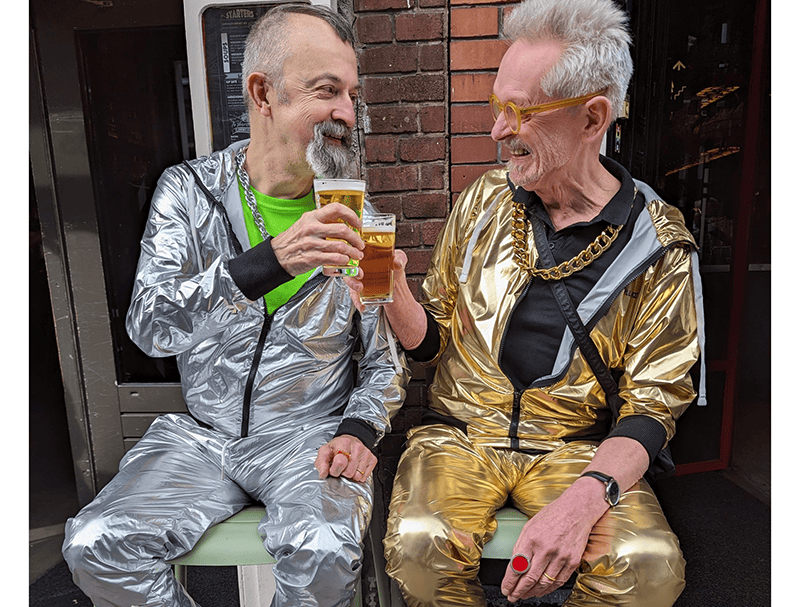
Willem and Paul celebrated life with (newly invented) traditions, rituals, and, above all, many parties, held at their home, in cafés, in the gallery, or elsewhere in the city of Amsterdam. Willem and Paul spent half a century together. The couple married in 2006, five years after it became legally possible in the Netherlands for couples other than woman and man to marry each other. Their marriage was sealed with rings of gold made by Joke Brakman. Prior to the ceremony, the rings had been attached to each other. During the ceremony, the rings were put on and pulled apart.
Willem always wore his wedding ring and a golden version of the Wisselring (Exchange Ring) made by Paul. He also often wore necklaces made by Paul. Occasionally Willem was spotted with a necklace by Nel Linssen or a brooch by Floor Mommersteeg. Willem and Paul also collected other artefacts such as caps, teapots, prints and drawings, ceramics, baskets, and paintings.
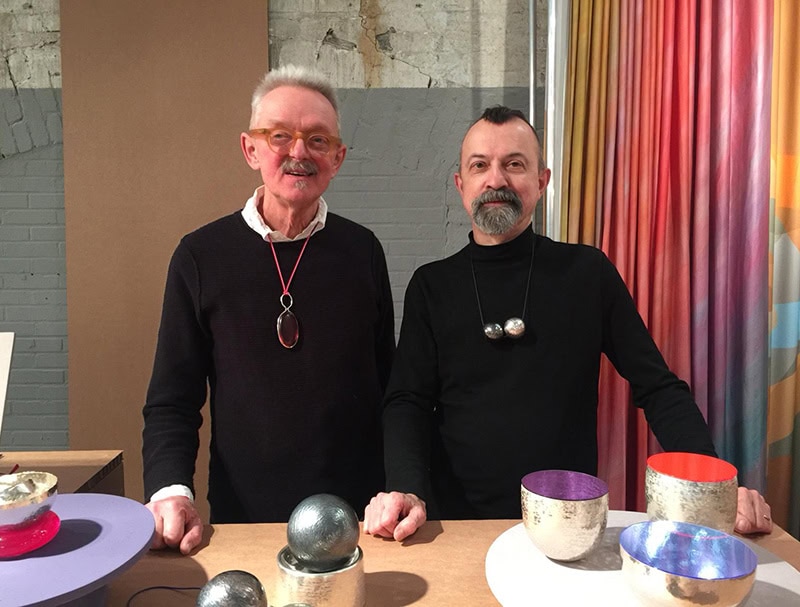
At the party celebrating 40 years of Galerie Ra, at which hedendaagsesieraden.nl was launched, Willem asked me if I would like to say something. I had prepared a short talk, but had not dared to ask for the mic. Willem just gave it to me. He had also read all 40 articles in advance and provided useful comments and additions, for which I am extremely grateful.
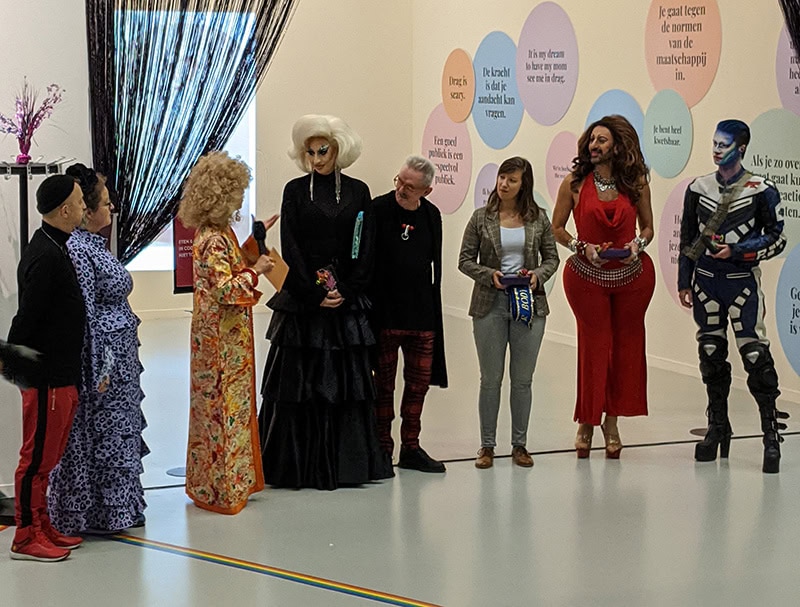
Willem and Paul regularly visited the Dutch opera as well as drag performances. At a certain point, the idea came up to create the exhibition Drag Power—Gender, Pride & Glamour, in collaboration with CODA curator Roosmarij Deenik. The exhibition opened in 2019. Together, Willem and Paul conducted research into various aspects of drag (drag = dressed resembling a girl), such as its (political and activist) history, the glamour of it, the theatrical aspects, and the different variants of drag.
In 2021, on the occasion of 25 years of Pride in Amsterdam, Willem and Paul donated Paul’s jewel Love Hurts, Dare to Love, from 1996, to the Rijksmuseum (BK-2021-13). The piece consists of 24 hearts made of transparent pink acrylic with two round holes through each, with which they are attached to two of the 25 circular aluminum links. Each heart has the first name of a late friend engraved in handwriting on it. They are people who died of AIDS. In addition to these hearts, the piece also has two labels made of transparent gray acrylic. The first label reads “LOVE HURTS,” and the second “DARE TO LOVE.” Immediately after the donation, the object was on display in the 20th-century department for more than six months, next to photographs by Robert Mapplethorpe (1946–1989).

In addition to his work as a teacher and his work for the gallery, Willem also volunteered as a caregiver for the many friends he and Paul lost during the AIDS epidemic. There were times when they attended funerals on a weekly basis.
Willem‘s funeral took place on May 11, 2024. He was taken on a cargo bike from his beloved home in Amsterdam Zuid. Accompanied by cycling friends, family, and many flowers, Willem rode for the last time through the arches of the Rijksmuseum to the Nieuwe Ooster cemetery, where the farewell ceremony took place.
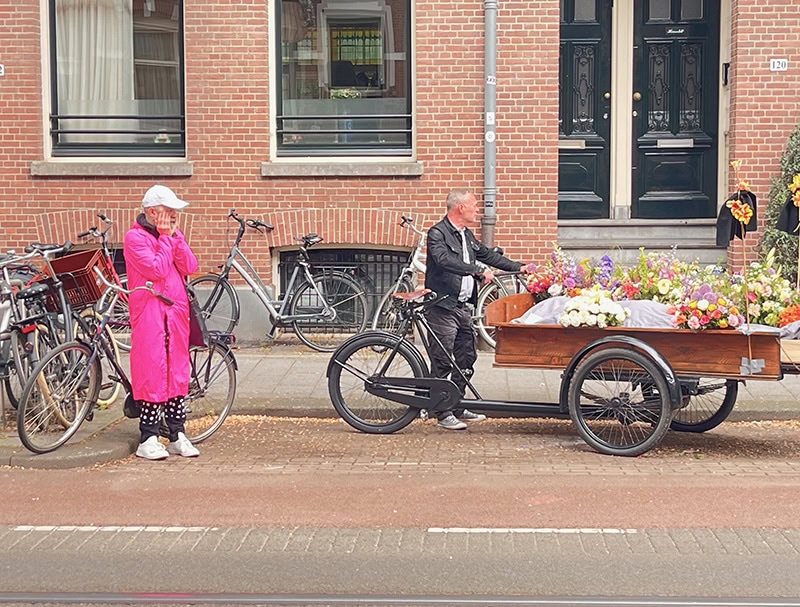
Selected Curated Exhibitions
2019 Drag Power: Gender, Pride & Glamour, CODA, Apeldoorn, the Netherlands (November 3, 2019–March 1, 2020)
Selected Exhibitions Centered around the Derrez & Hoogstede Collection
1985 Sieraden 1966–1986, Kritzraedhuis, Sittard, the Netherlands
1986 Sieraden 1966–1986, Collectie Paul Derrez en Willem Hoogstede, Gemeentemuseum Arnhem, Arnhem, the Netherlands (March 1, 1986–April 20, 1986)
1986 Sieraden 1966–1986, Collectie Paul Derrez en Willem Hoogstede, Museum het Kruithuis, Den Bosch, the Netherlands (January 11, 1986–February 16, 1986)
2013 Dare to Wear: Sieraden uit de Collectie Paul Derrez/Willem Hoogstede, CODA, Apeldoorn, the Netherlands (September 15, 2013–January 30, 2014)
Selected Publications
Liesbeth den Besten, Dare To Wear, Art Jewelry Forum (December 19, 2013).
Esther Doornbusch, November 2019: Sieradenmaand in Nederland, hedendaagsesieraden.nl (November 6, 2019).
Saskia van Es, Fearlessly Self-made: A Review of Drag Power, Art Jewelry Forum (February 10, 2020).
Martijn Kamphorst, “Drag is zo veel meer dan een vent in een jurk”, 5 vragen aan… de curators van Drag Power, Winq (February 19, 2020).
Luca Soudant, Drag Power, Current Obsession (November 13, 2019),
Willem en Paul vieren dat zij al 50 jaar in vrijheid homo kunnen zijn, AT5, (May 3, 2019).
We welcome your comments on our publishing, and will publish letters that engage with our articles in a thoughtful and polite manner. Please submit letters to the editor electronically; do so here.
© 2024 Art Jewelry Forum. All rights reserved. Content may not be reproduced in whole or in part without permission. For reprint permission, contact info (at) artjewelryforum (dot) org

